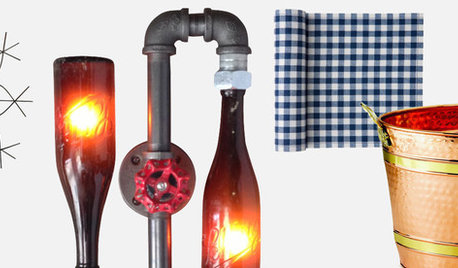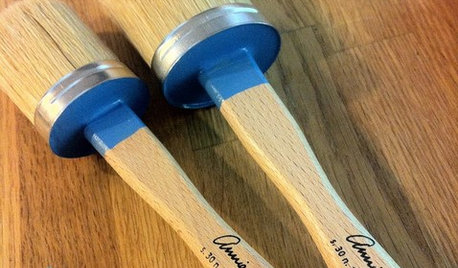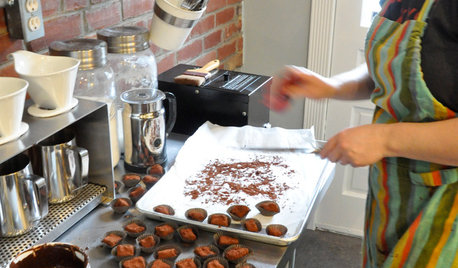Meat curing and sausage making
ksrogers
15 years ago
Related Stories

FEEL-GOOD HOMESimple Pleasures: Make Do and Mend
Experience the satisfaction of fixing, repurposing and creating things yourself around the home
Full Story
KITCHEN DESIGNKitchen Sinks: Fireclay Brims With Heavy-Duty Character
Cured at fiery temperatures, fireclay makes for farmhouse sinks that just say no to scratches and dents
Full Story
SHOP HOUZZHouzz Products: Say ‘Prost’ to Oktoberfest
Celebrate the harvest season Bavarian-style with steins of beer, sausages and rustic pieces — plus 2 party recipes
Full Story
FEEL-GOOD HOMESimple Pleasures: Scent and Memory
Fragrant jasmine, fresh-brewed coffee, baking bread. Scents can evoke memories and bring sensory pleasure to our homes
Full Story
PRODUCT PICKSGuest Picks: Handy Finds for Painting Projects of All Kinds
Make over rooms and furniture more easily and with better results with the right paint and gear
Full Story
OUTDOOR KITCHENSYour Grill Season Checklist
Get your barbecue in top shape and round up essential grilling tools to make your backyard cookouts sizzle
Full Story
FEEL-GOOD HOME12 Very Useful Things I've Learned From Designers
These simple ideas can make life at home more efficient and enjoyable
Full Story
MODERN ARCHITECTUREHouzz Tour: A Concrete Box Home With Japanese Style
A love of Japan’s minimalistic style and the use of concrete make for a mystical experience in this Houston home
Full Story
HOUZZ TOURSMy Houzz: Pure Simplicity Reigns in Salt Lake City
Minimalist style puts dynamic architecture and hillside views front and center in a renovated Utah home
Full Story
KITCHEN DESIGNLove to Cook? We Want to See Your Kitchen
Houzz Call: Show us a photo of your great home kitchen and tell us how you’ve made it work for you
Full StorySponsored
Columbus Design-Build, Kitchen & Bath Remodeling, Historic Renovations



ediej1209 AL Zn 7
ksrogersOriginal Author
Related Discussions
Does anyone here cure their own meat?
Q
Cheap sausage stuffer anyone??
Q
canning sausage meat
Q
RECIPE: canning sausage meat
Q
mxbarbie
ladytexan
ksrogersOriginal Author
ladytexan
ksrogersOriginal Author
ladytexan
ksrogersOriginal Author
ksrogersOriginal Author
ksrogersOriginal Author
jimster
ksrogersOriginal Author
psittacine
ksrogersOriginal Author
jimster
psittacine
dancinglemons
ksrogersOriginal Author
jimster
psittacine
ksrogersOriginal Author
jimster
ksrogersOriginal Author
mstancato
ksrogersOriginal Author
mstancato
ksrogersOriginal Author
mstancato
ksrogersOriginal Author
mstancato
ksrogersOriginal Author
ksrogersOriginal Author
busylizzy
ksrogersOriginal Author
ksrogersOriginal Author
jimster
ksrogersOriginal Author
ksrogersOriginal Author
earl
ksrogersOriginal Author
gymnmore
ksrogersOriginal Author
jimster
ksrogersOriginal Author